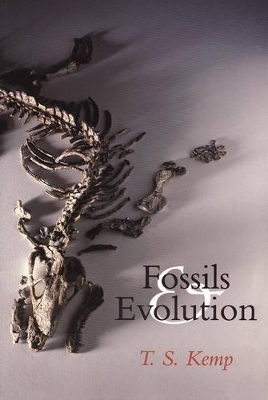
Fossils and Evolution
Seiten
1999
Oxford University Press (Verlag)
978-0-19-850424-5 (ISBN)
Oxford University Press (Verlag)
978-0-19-850424-5 (ISBN)
The book interprets evidence from biology and from geology in order to describe and interpret how fossils are used in understanding biological evolution. It reviews the main ideas and research areas in contemporary palaeobiology.
The book is about the ideas, methodology and scope of contemporary palaeobiology, rather than a comprehensive, detailed survey of the factual basis of the subject. It addresses the issue of how on the one hand evolutionary theory is necessary for interpretation of the fossil record, and yet on the other the fossils themselves can contribute to evolutionary theory. This is shown not to be the circular argument between pattern and process sometimes alleged, but a matter of understanding carefully the interrelationship between palaeontological and neontological evidence.
The book is organised into two sections. Part 1 consists of four chapters outlining the principles, namely: the nature of the pattern/process relationship, taxonomic methods and the analysis of pattern, evolutionary theory and the analysis of process and the nature of incompleteness of the fossil record and what to do about it. Armed with these principles and methods, Part 2 is devoted to the five central areas of contemporary research in evolutionary palaeobiology. These are: fossils and phylogenetic inference; the mechanism of speciation; taxonomic turnover on the geological time-scale; mass-extinctions; the origin of new higher taxa. In each case the nature of the questions and the relevant kinds of evidence, including such new sources as molecular sequence data and stable isotope ratios where appropriate, are reviewed. The extent to which palaeobiology has, and has not yet, contributed to providing the sought after answers is made clear.
The book is about the ideas, methodology and scope of contemporary palaeobiology, rather than a comprehensive, detailed survey of the factual basis of the subject. It addresses the issue of how on the one hand evolutionary theory is necessary for interpretation of the fossil record, and yet on the other the fossils themselves can contribute to evolutionary theory. This is shown not to be the circular argument between pattern and process sometimes alleged, but a matter of understanding carefully the interrelationship between palaeontological and neontological evidence.
The book is organised into two sections. Part 1 consists of four chapters outlining the principles, namely: the nature of the pattern/process relationship, taxonomic methods and the analysis of pattern, evolutionary theory and the analysis of process and the nature of incompleteness of the fossil record and what to do about it. Armed with these principles and methods, Part 2 is devoted to the five central areas of contemporary research in evolutionary palaeobiology. These are: fossils and phylogenetic inference; the mechanism of speciation; taxonomic turnover on the geological time-scale; mass-extinctions; the origin of new higher taxa. In each case the nature of the questions and the relevant kinds of evidence, including such new sources as molecular sequence data and stable isotope ratios where appropriate, are reviewed. The extent to which palaeobiology has, and has not yet, contributed to providing the sought after answers is made clear.
1. Introduction ; 2. Some fundamental ideas ; 3. Evolutionary theory: analysing process ; 4. Taxonomy: analysing pattern ; 5. Incompleteness and what to do about it ; 6. Fossils and phylogeny: if only we had more fossils ; 7. Speciation: gradual, punctuated, or what? ; 8. Rules and laws of taxonomic turnover: are there any? ; 9. Mass extinctions: resetting the evolutionary clock ; 10. The origin of new higher taxa: the ultimate question ; 11. Epilogue: where next?
| Erscheint lt. Verlag | 1.2.1999 |
|---|---|
| Zusatzinfo | 1 halftone, numerous line figures |
| Verlagsort | Oxford |
| Sprache | englisch |
| Maße | 157 x 234 mm |
| Gewicht | 453 g |
| Themenwelt | Naturwissenschaften ► Biologie ► Evolution |
| Naturwissenschaften ► Geowissenschaften ► Mineralogie / Paläontologie | |
| ISBN-10 | 0-19-850424-1 / 0198504241 |
| ISBN-13 | 978-0-19-850424-5 / 9780198504245 |
| Zustand | Neuware |
| Haben Sie eine Frage zum Produkt? |
Mehr entdecken
aus dem Bereich
aus dem Bereich
Komplette Neuübersetzung. Mit einem Nachwort von Josef H. Reichholf.
Buch | Hardcover (2018)
Klett-Cotta (Verlag)
CHF 67,20
Wie die Vernichtung der Arten unser Überleben bedroht - Der …
Buch | Softcover (2023)
Penguin (Verlag)
CHF 20,95


